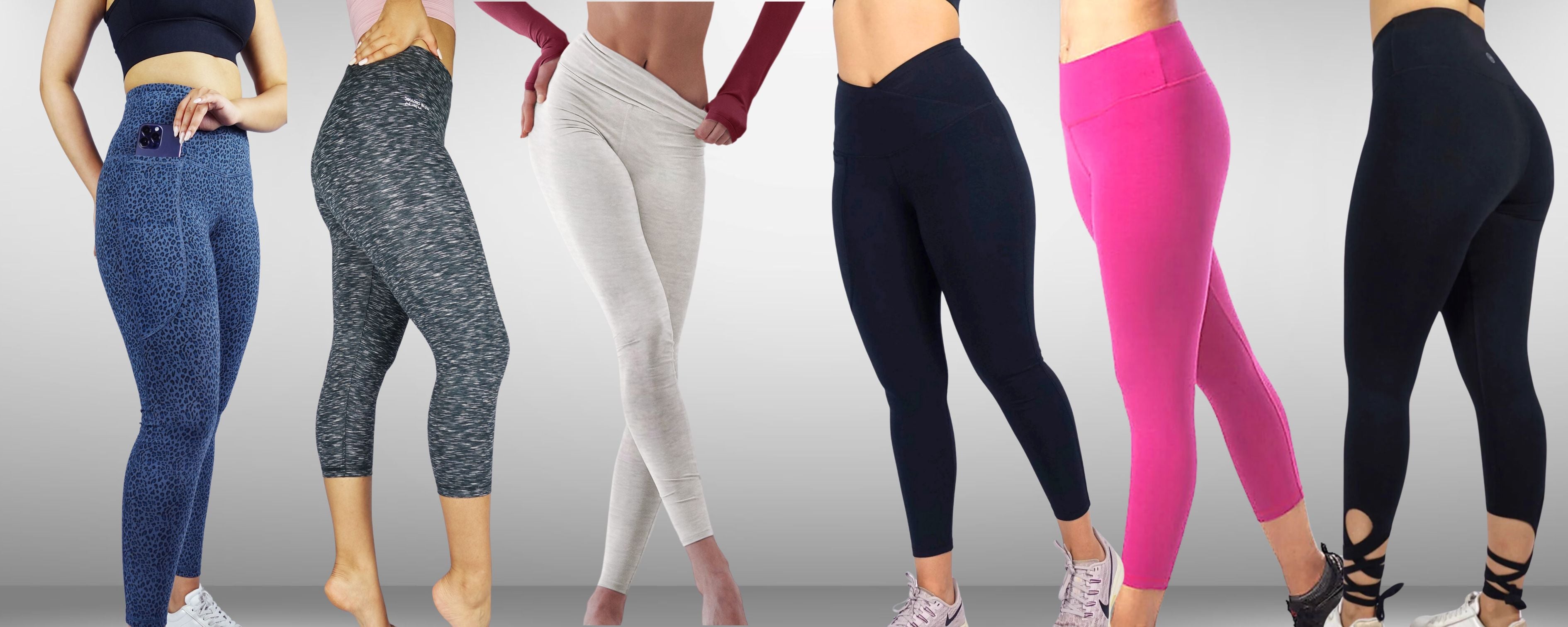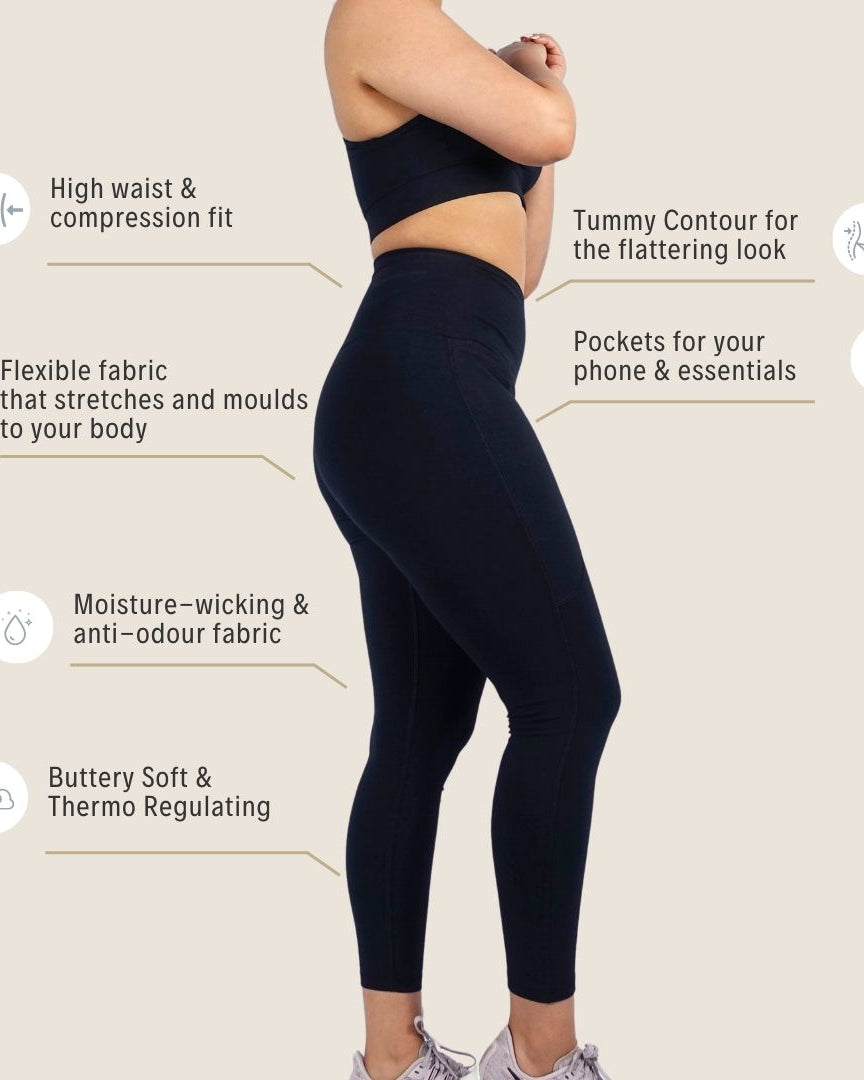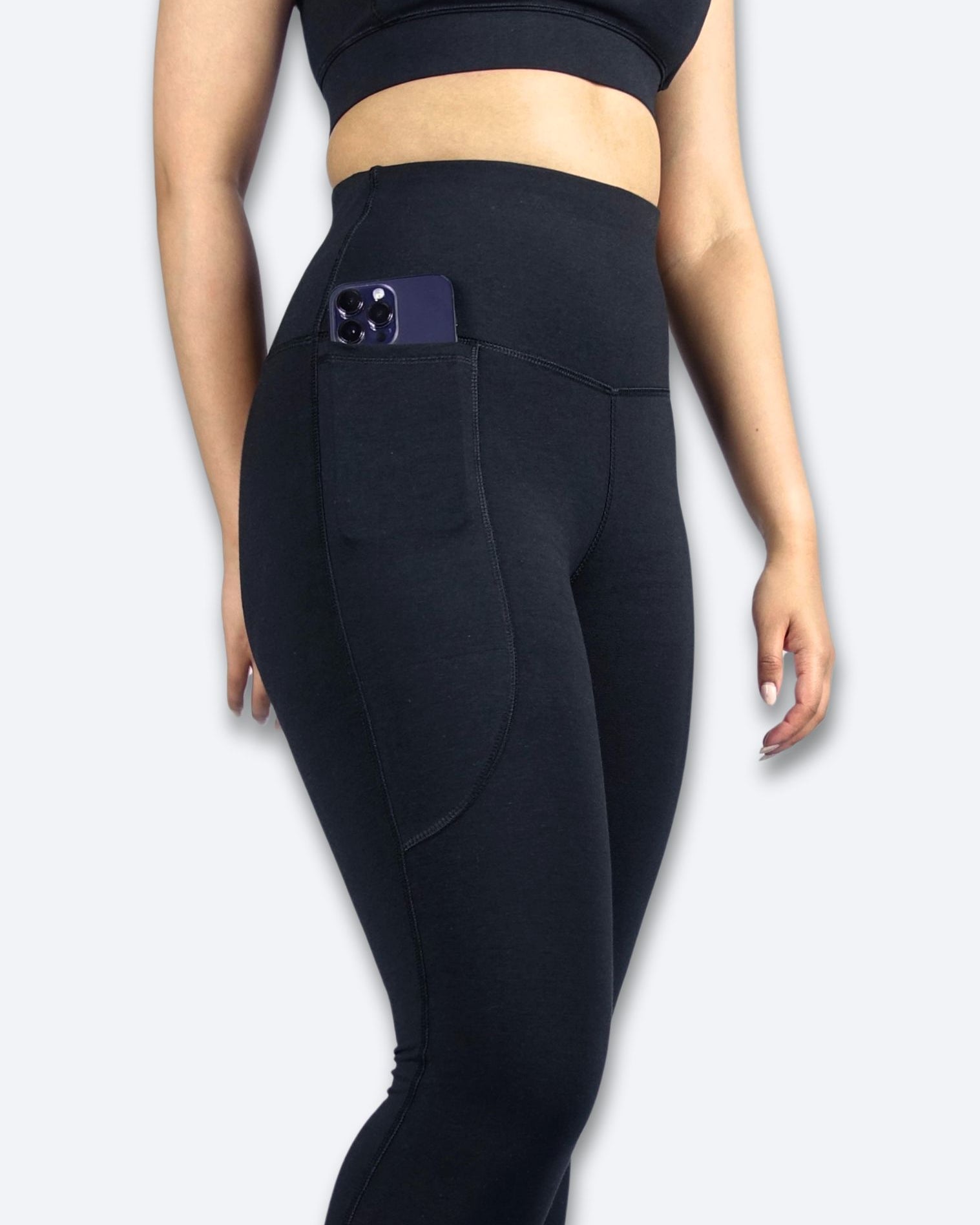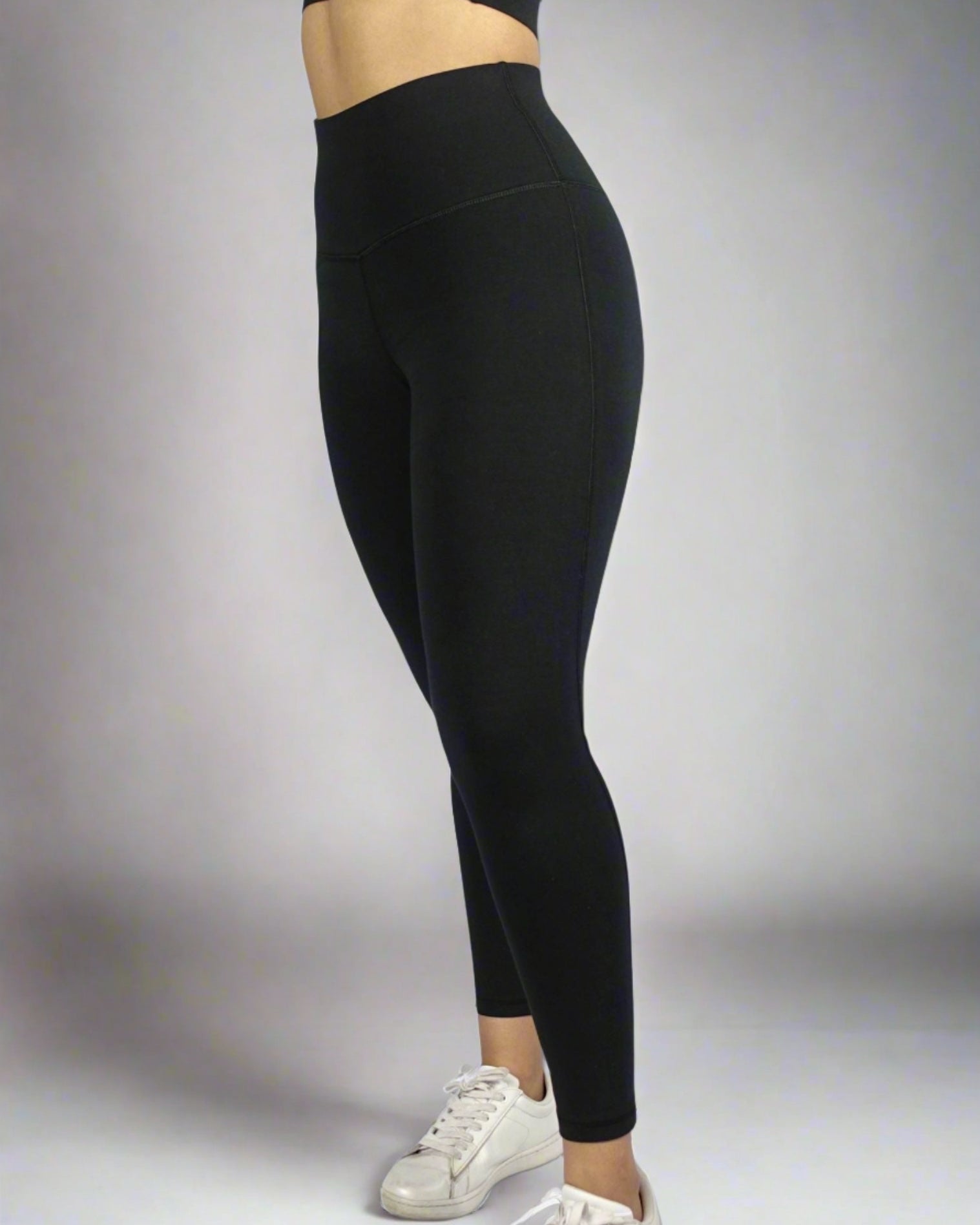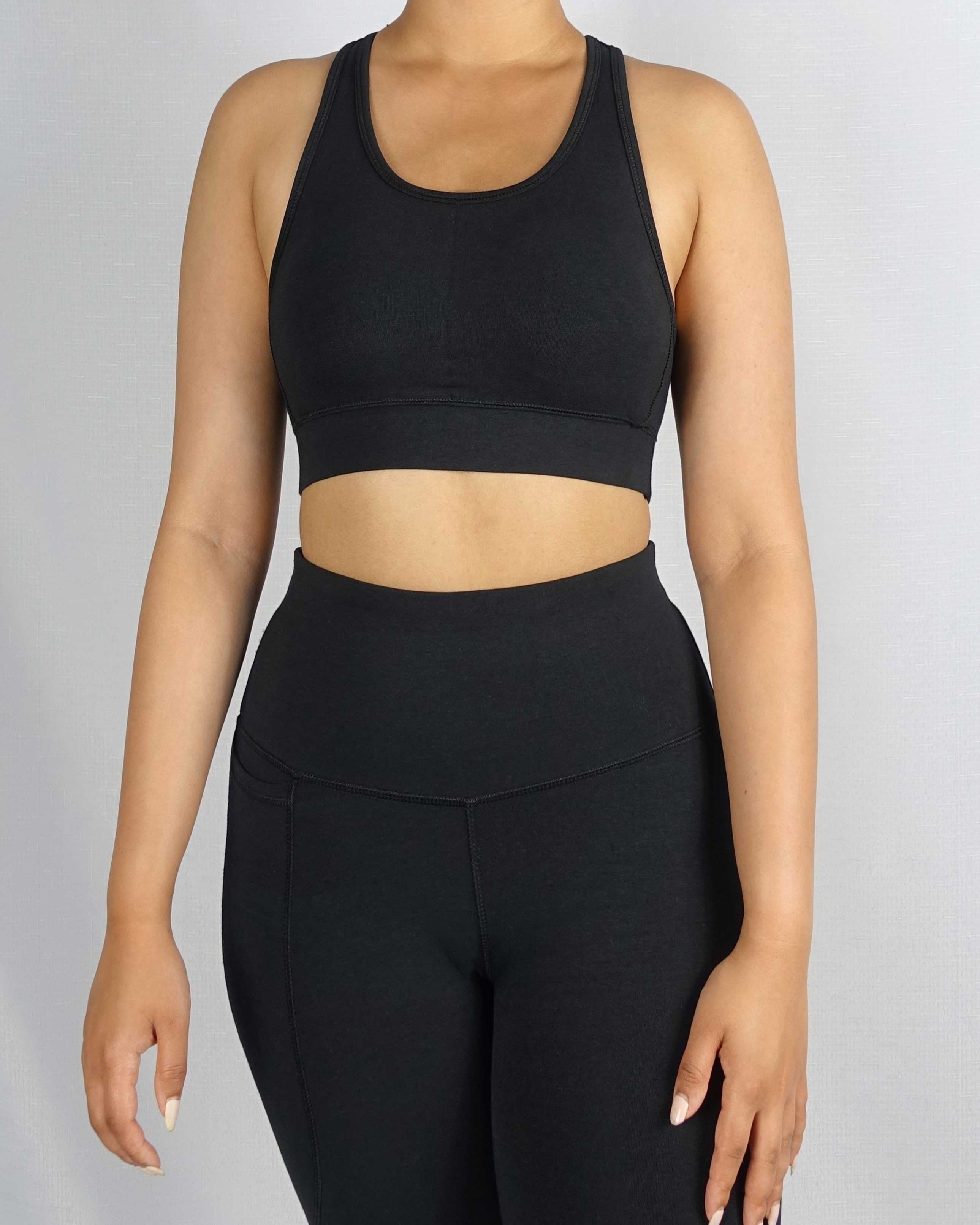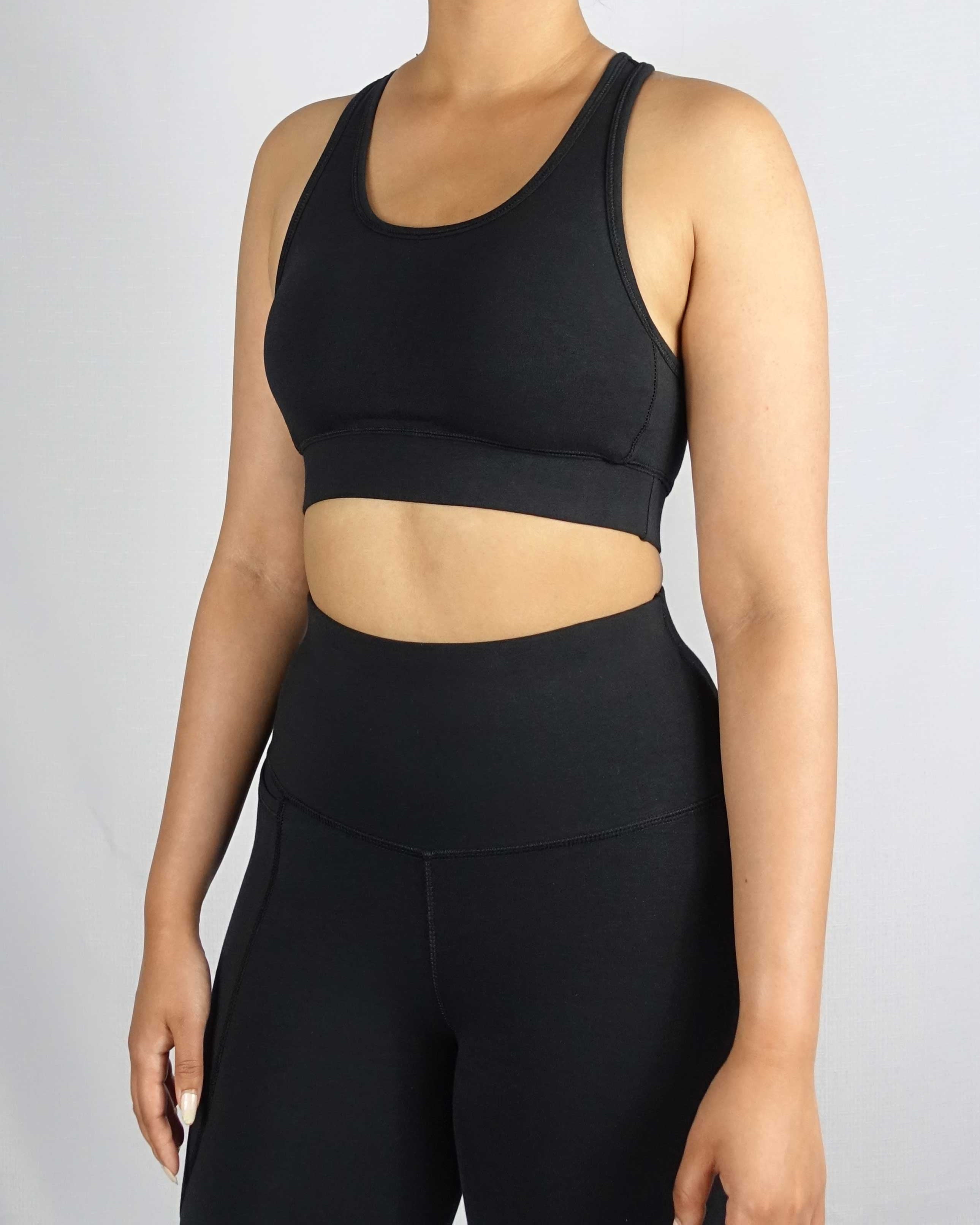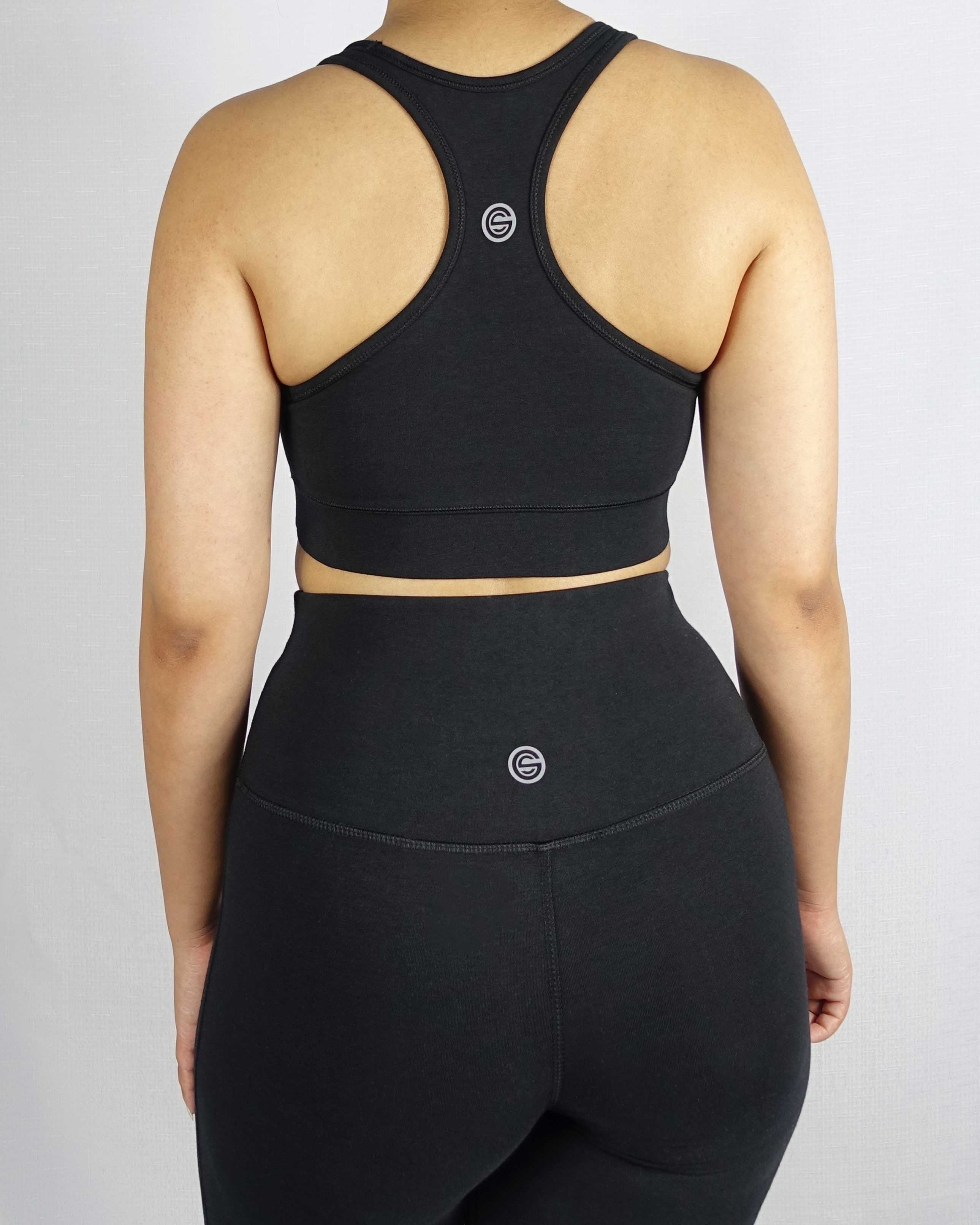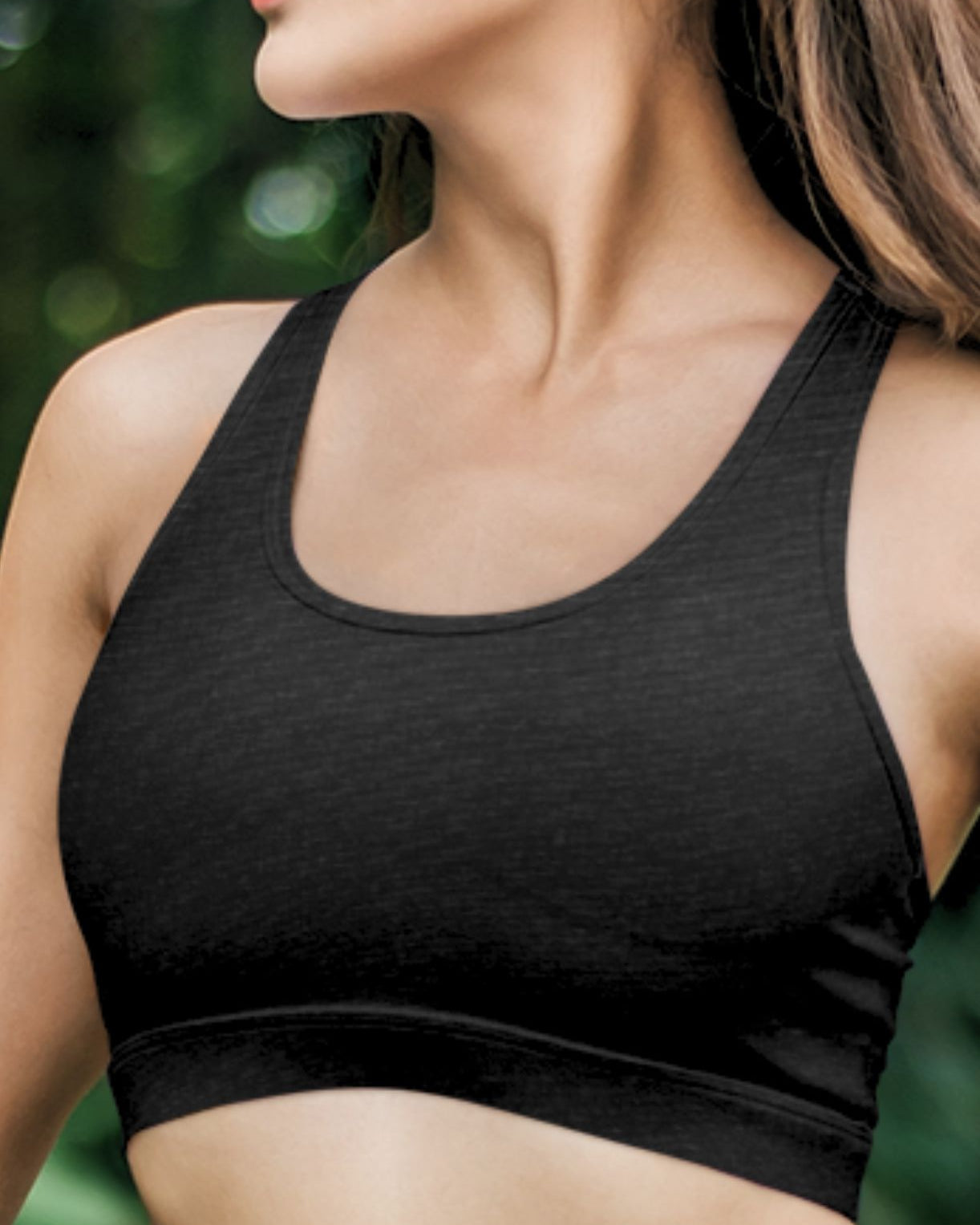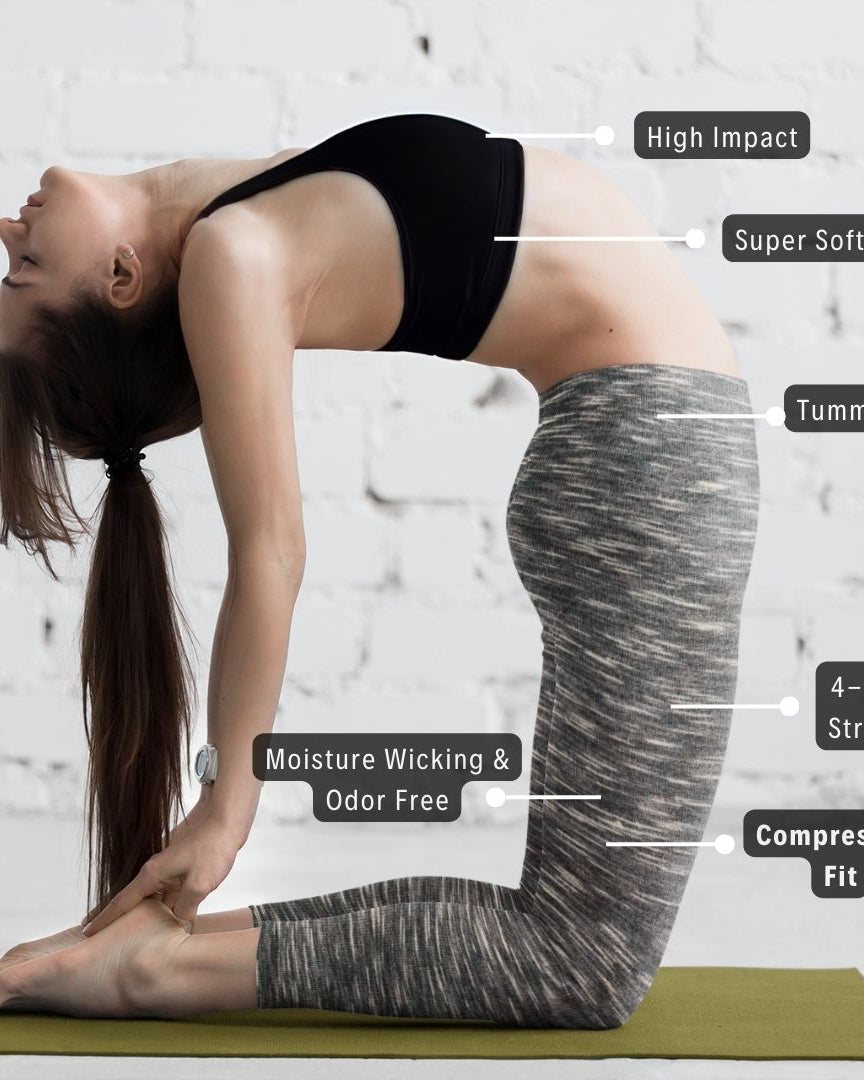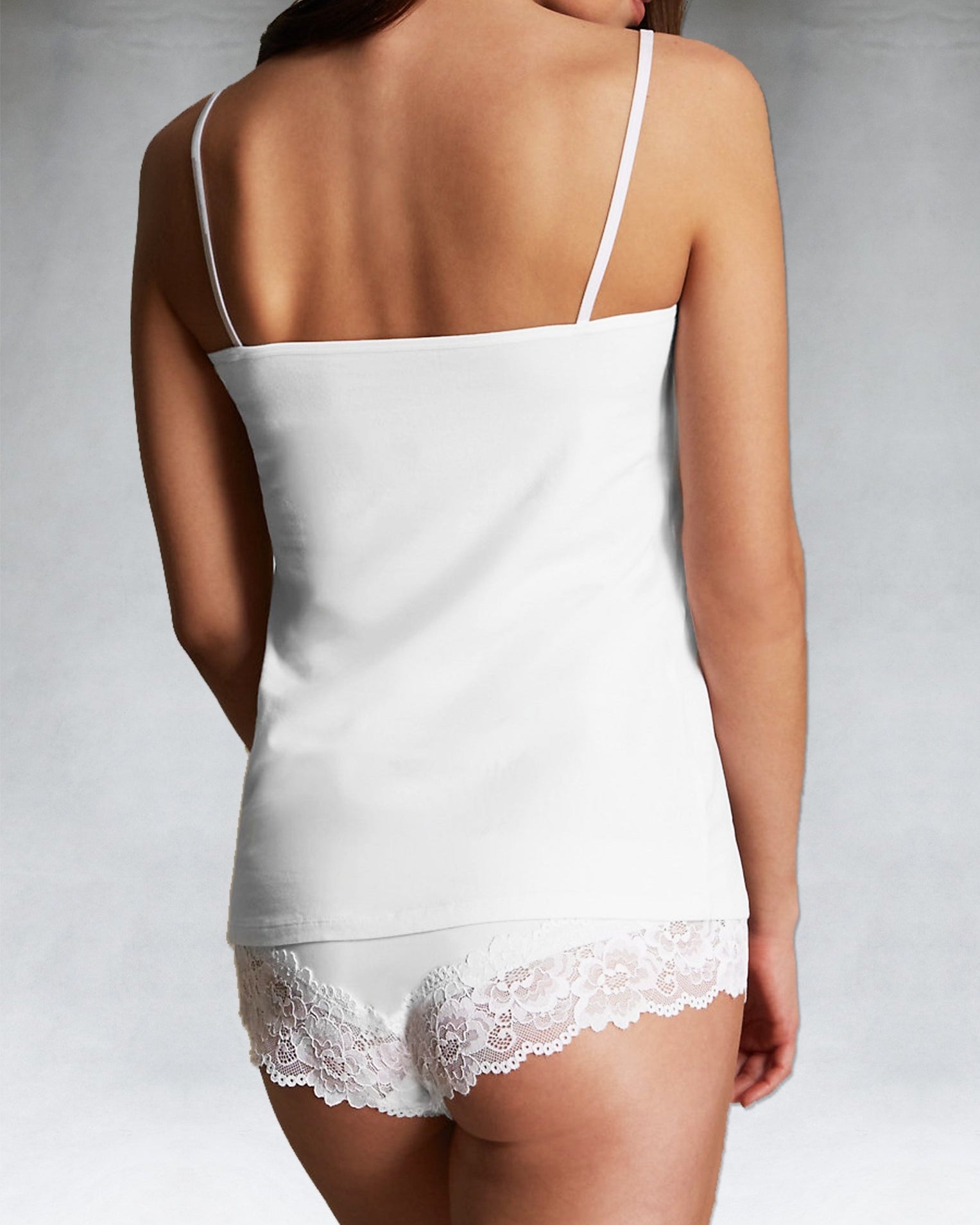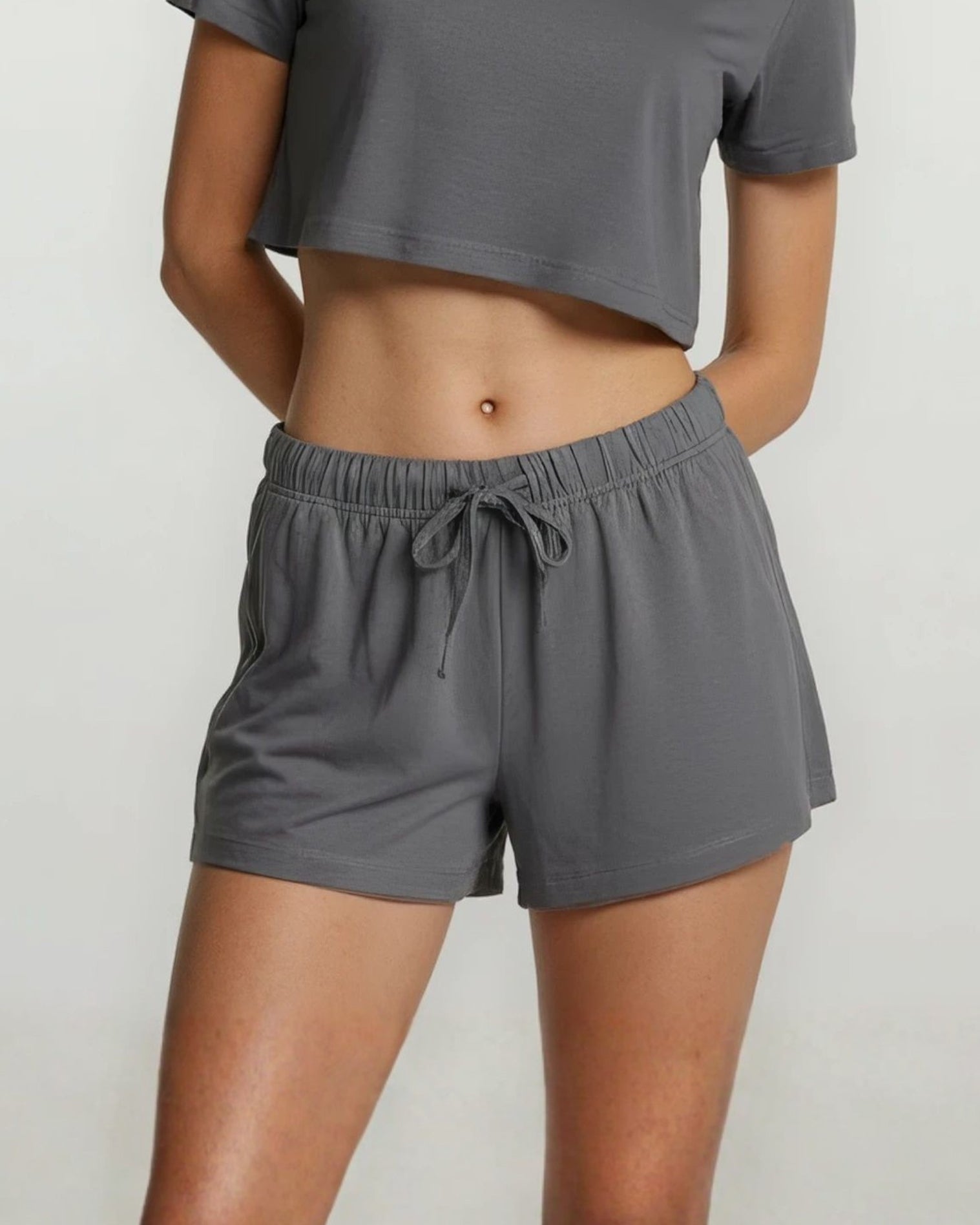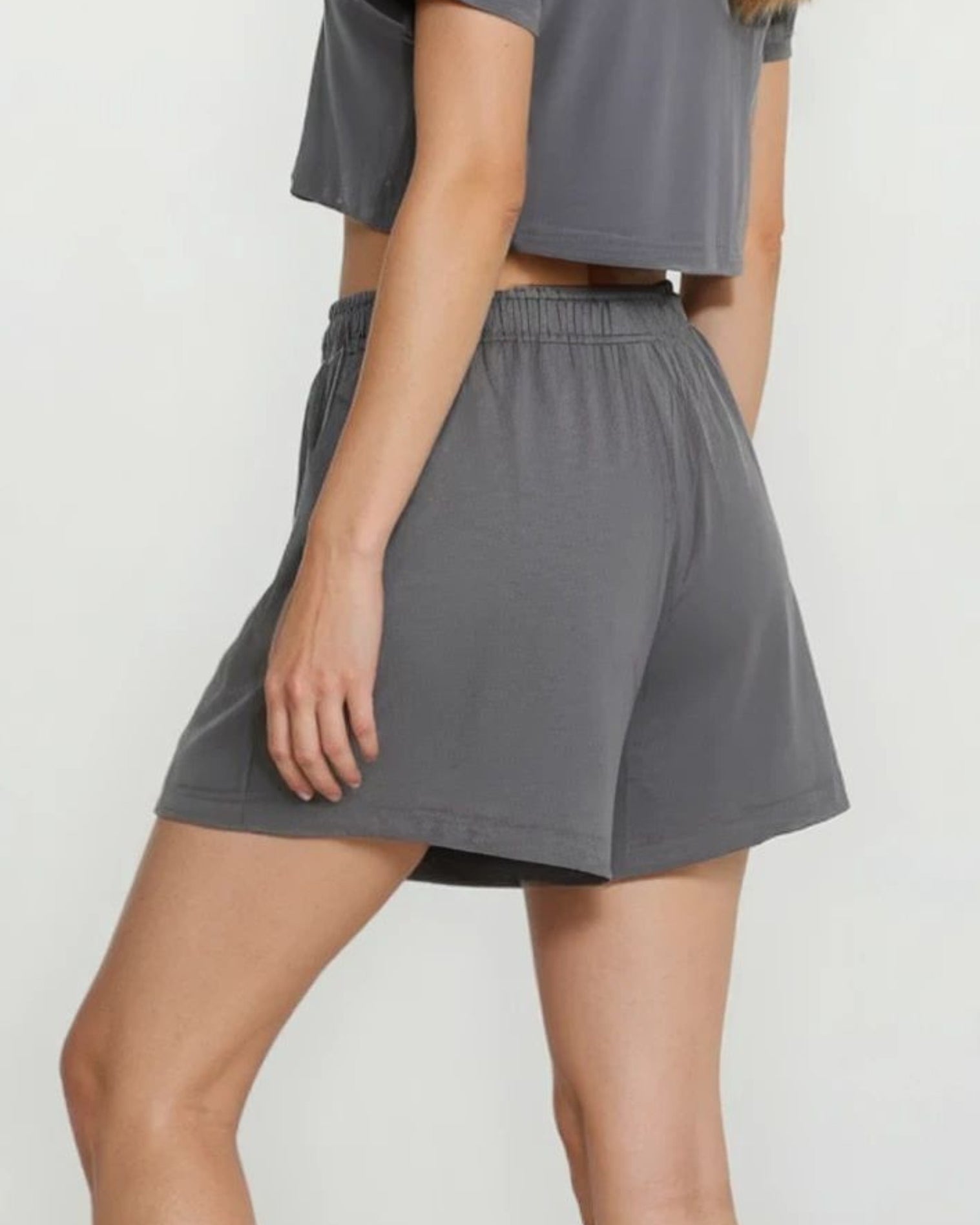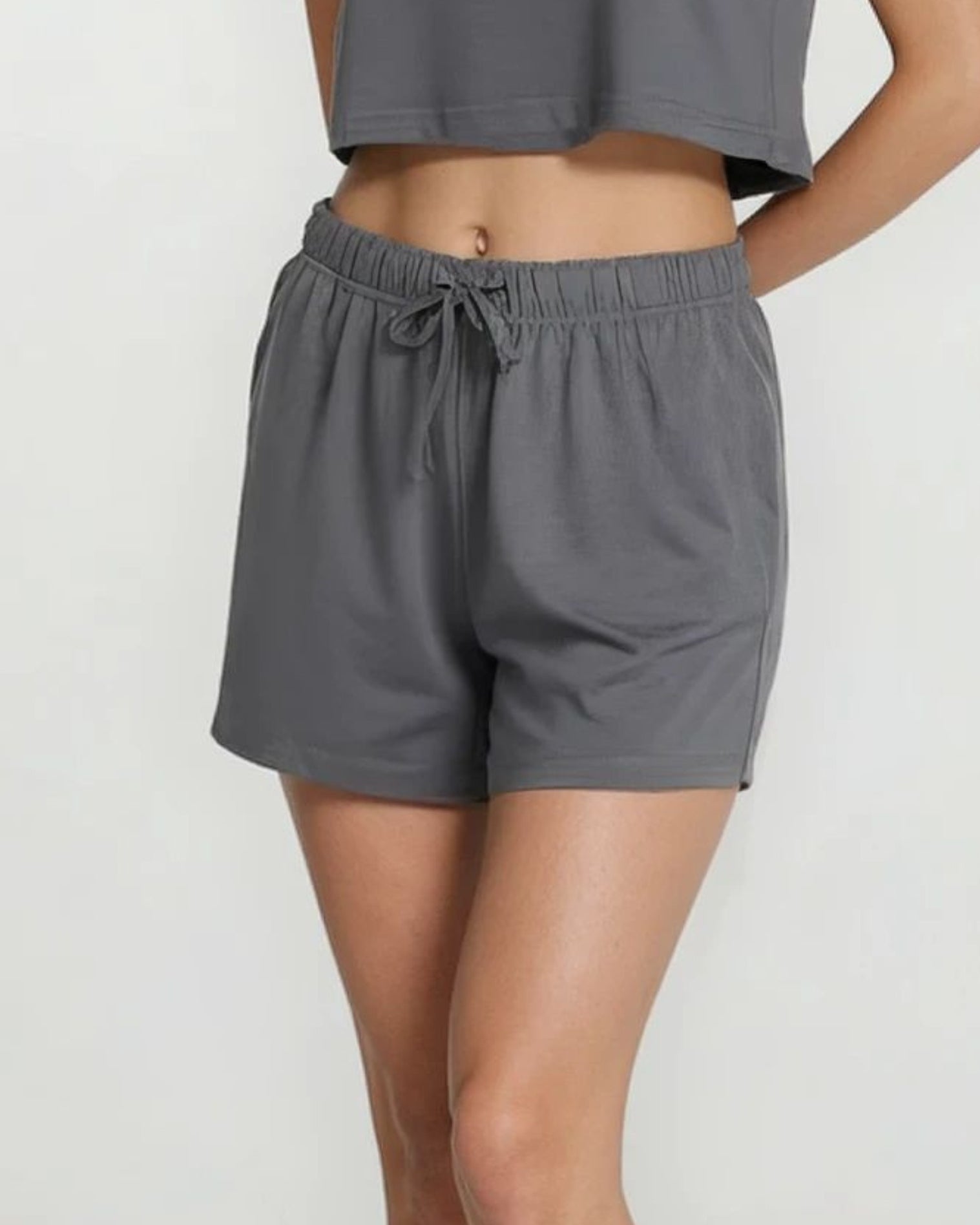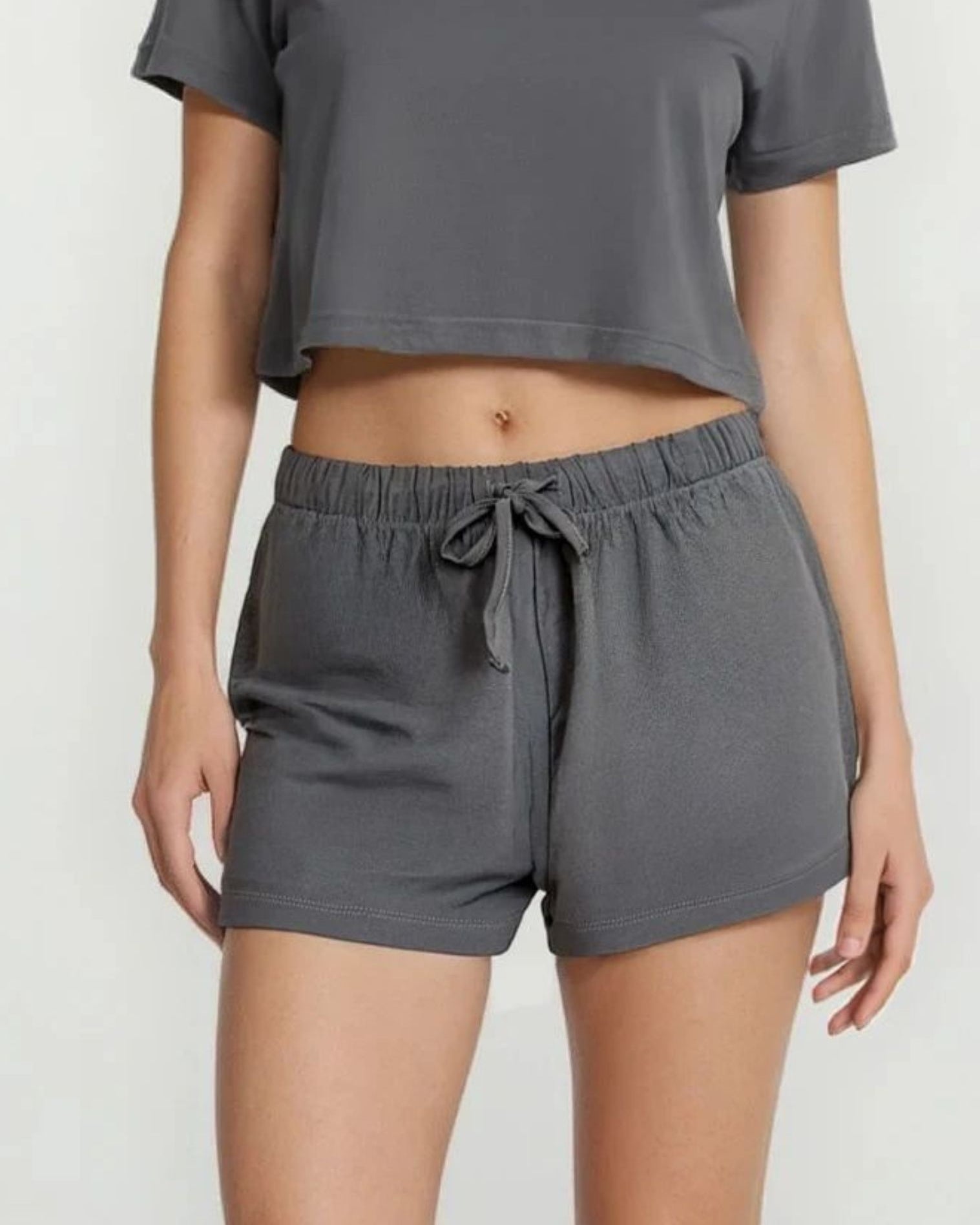Have you also been reading the concerns raised with regards to the clothes we wear, especially the ones we sweat in? This blog post has been prompted by the numerous emails we have been receiving from the community with regards to plastics in the daily clothing you wear. There is general concern in the community which has been spiked from the media. Recently, the Center for Environmental Health (CEH) after testing a range of activewear found that they contained more BPA than ideal and could expose wearers to up to 40 times the safe limit of BPA (1). Some big players have received legal notices as well which is alarming! We certainly understand your concern and will be discussing what this means and how we can strive towards better user wellbeing + better eco-system.

We’re going to address activewear specifically. There are two main concerns here:
- User health impact – how does plastic in clothing impact on the body
- Environmental impact – how does plastic in clothing impact upon the eco-system
But before we delve into them, what about and why are we talking about plastic in clothing?
Plastic in clothing? How about health issues caused due to BPA (chemical bisphenol A)?
We generally hear more about:
- “Use BPA free water bottles and plastic containers for your food and drinks”
- “The oceans are lining up with plastic waste”
- “Fishing nets are causing havoc”
and so on. But the awareness of plastic within the clothing that we wear day in and day out has not been talked about much.
Quite a lot of studies have pointed out that plastic is in most clothing containing synthetic fabric. So why is synthetic fabric so popular then? Mainly due to their being cheap and easily adaptable. Well, research shows that a staggering 100 billion items just in clothing are produced each year globally and guess what - out of this more than 65% of our clothes contain plastic or micro plastics.
What is BPA?
BPA stands for bisphenol A, a chemical used in the production of polycarbonate plastics. This type of plastic is often found in water bottles, car parts and the lining of cans. It can also be found in many types of commercially available food containers. Polycarbonate plastics are impact-resistant and shatterproof and can withstand temperatures up to 400 degrees Fahrenheit (204 celsius!). These attributes make them useful in any number of industrial applications, but they also make it difficult to recycle.
Unfortunately, the use of plastic in activewear is becoming increasingly common, and it’s important to understand the potential risks that come with this material. Let’s explore how BPA affects our health and why brands should avoid using plastic in their activewear.

Potential BPA source and targets. Image source: Cimmino, 2020, p. 2 (2)
User Health Impact due to Plastic in Clothing
According to the Ellen MacArthur Foundation, 63% of all clothing fibers are synthetic, and the majority of those are made from plastic (3). Plastic is an integral part of many activewear brands, but it can be detrimental to our health. Many plastics contain a chemical called BPA, which has been linked to a number of health issues. Unfortunately, as we see the use of plastic in activewear is becoming increasingly common, and it’s important to understand the potential risks that come with this material.
The health effects of BPA have been documented for decades. That said, the impact of BPA on human health is still being studied, and recent research has shown that it may be linked to a number of health problems. What are the consequences of exposure to BPA? The most common effects associated with BPA exposure include reproductive disorders such as infertility, early puberty, and breast cancer; obesity; diabetes; heart disease; behavioural issues like autism and ADHD; attention deficit hyperactivity disorder (ADHD); weakened immune system response (4).
Studies have also shown that sweat or body wetness can cause BPA from the fabric to leech more into the skin and the more you lounge around in your sweaty synthetic clothing, the more attractive your skin to toxins. Most activities allow for our body to sweat and as the trend is currently, we live in our activewear especially during weekends!
Environmental impact due to Plastic in Clothing
We all know that as activewear becomes more and more popular, so does the concern over the environmental impact of plastics in these garments. Plastics are used to make many activewear garments, such as leggings, sports bras, and tank tops. Unfortunately, these materials are not biodegradable and can take up to thousands of years to decompose. This means that they remain in the environment for a very long time and can be extremely harmful to wildlife and ecosystems.
It is no secret that plastic in activewear has become a major environmental concern. As more and more of us are becoming conscious about the effects of our clothing choices on the environment, it is important to understand why plastics have become such a significant issue in activewear garments. Plastics in activewear are often used for their durability and comfort, but they can also be damaging to the environment if not disposed of properly. The microplastics released from these garments can end up in our waterways, causing pollution and harming marine life. Furthermore, plastic-based fabrics tend to be non-biodegradable, meaning they will remain in landfills for years to come. Waste production out of this is also a worrying issue as seen from the stats given below.

Image source: TheRoundup (5)
How do we reduce these impact on us humans and the ecosystem?
As consumers become increasingly aware of the environmental impact of their clothing choices, it is essential that we take action now and find alternatives to plastic-based fabric for our activewear garments.
Alternatives to synthetic fabric
Fibres used in clothing can be subdivided into two major categories:
- Natural: those that exist in nature such as cotton, wool, silk, and others
- Synthetic fibres such as polyester, nylon, acrylic, and others
Choosing eco-friendly fabric is part of our responsibility as a community that makes conscious decisions to help sustain our environment and the eco-system. The good news is that there are alternatives available for those who want to reduce their plastic footprint while still enjoying activewear. Companies are now producing activewear made from recycled materials or sustainable fibres like bamboo or hemp. These fabrics are not only better for the environment but also health friendly to the skin & body and more comfortable and durable than traditional fabric blend using synthetic material. They also require less water and energy to produce while also boasting biodegradable properties - meaning they will break down in the environment over time.
By making the switch to sustainable fabrics, we can help ourselves as well as reduce our environmental impact while still enjoying our favourite activities in style! If you need some super soft buttery leggings with all of these benefits (plastic free too of course), we have them!
Here’s a few important things to keep in mind when choosing sustainable clothing and activewear:
Organic cotton: Organic cotton is grown without the use of harmful pesticides or fertilizers. It is a more sustainable option than conventional cotton. You can read more about our BCI Certified Organic Cotton here.
Bamboo: Bamboo is a renewable resource that grows quickly. It is also a soft and comfortable fabric and has natural moisture wicking properties due to its breathability. The natural shine of bamboo gives it a luxurious look and feel. If you’d like to read more about Bamboo in activewear, check this out.
Wool: Wool is a natural fibre that is warm and durable. It is also a good choice for people with allergies. Wool though is more convenient to use in cold climatic conditions.
![]()
We at Active by GS not only believe in respecting the environment and focusing on sustainable solutions, but also believe in the health and wellbeing of our users, that is our Active by GS family who has given us much love and supported our small business. Our unique blend of organic cotton and bamboo results in the incredibly soft fabric that has become the hallmark of our activewear. Read more about bamboo and organic cotton here.
It is also important to consider the company's commitment to sustainability. Some companies are more transparent about their sustainability practices than others. It is a good idea to do some research before you buy sustainable activewear.
By choosing sustainable activewear, you can help reduce your impact on the environment. You can also feel-good knowing that you are supporting companies that are committed to sustainability.
References
-
Difrisco, Emily, 2023. New Testing Shows High Levels of BPA in Sports Bras and Athletic Shirts. Centre for Environmetal Health. https://ceh.org/latest/press-releases/new-testing-shows-high-levels-of-bpa-in-sports-bras-and-athletic-shirts/
-
Cimmino, Ilaria, Francesca Fiory, Giuseppe Perruolo, Claudia Miele, Francesco Beguinot, Pietro Formisano, and Francesco Oriente. 2020. "Potential Mechanisms of Bisphenol A (BPA) Contributing to Human Disease" International Journal of Molecular Sciences 21, no. 16: 5761. https://doi.org/10.3390/ijms21165761
-
Ellen Macarthur Foundation, 2023. A New Textiles Economy: Redesigning fashion’s future. https://ellenmacarthurfoundation.org/a-new-textiles-economy
-
Ramakrishna, M., Girigoswami, A., Chakraborty, S. and Girigoswami, K., 2021. Bisphenol A—An overview on its effect on health and environment. Biointerface Res. Appl. Chem., 12, pp.105-119. Biointerface Research in Applied Chemistry – Open-Access Journal (ISSN: 2069-5837)
-
TheRoundup, 2023. 17 Most Worrying Textile Waste Statistics & Facts https://theroundup.org/textile-waste-statistics/

